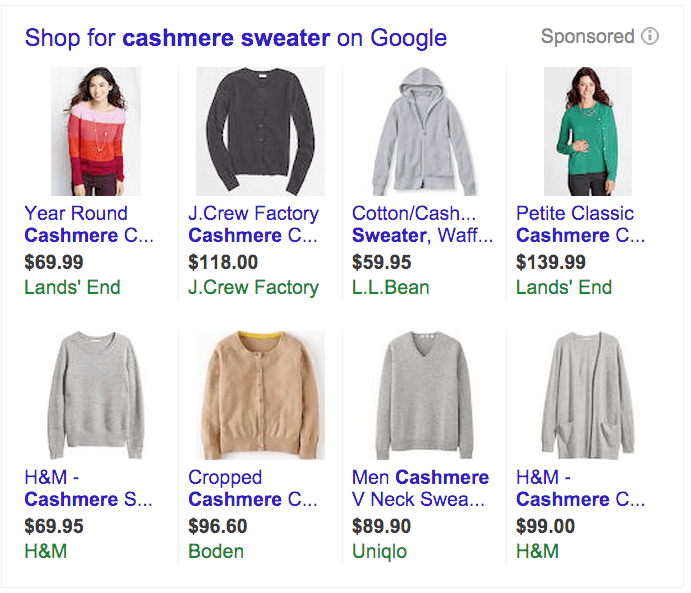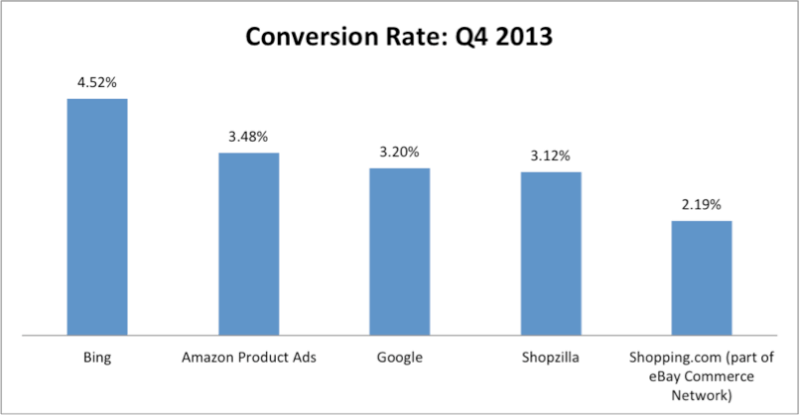How To Keep Your Product Advertising Game Sharp
Contributor Matt Ackley from Marin provides data and insights on the latest product advertising trends and best practices.

A magical thing happened prior to the visual explosion of the internet: Google took some of the best elements of brand marketing and married it with some of the best elements of performance marketing to create an all-new ad product category, the shopping ad, which it dubbed the Product Listing Ad (PLA).
PLAs were a visually striking update tailor-made for online retailers that also delivered the performance to make retail search marketers take notice.
Over the past five years, ever since PLAs debuted in beta in 2009, not only have retailers jumped on board this high-performing ad format, but the competition has followed suit, too.

Product Listing Ads Today
How Popular Have PLAs Been?
According to a recent Marin white paper, “The 17 Trends, Publishers, and Best Practices Every Retailer Needs to Know,” product ads have been the proverbial belle of the retail search marketing ball over the past year.
[blockquote]In April 2014, Marin Software reported that spend on PLAs grew 40% year over year, while spend on text ads grew only 6% year over year.[/blockquote]
Though Google is still the leader in the product ad space, other players like Bing, Amazon, and eBay have stepped in to give advertisers some long-awaited choice.
How Well Do PLAs Perform?
In July 2013, the click-through rate of Google PLAs was 21% higher than the CTR of text ads.Retailers also reported lower customer acquisition costs for PLAs compared to paid search text listings, and disclosed that the budget for PLAs “often comes from funds previously allocated to comparison-shopping engines.”
Redirecting budget into a higher engagement, lower cost-per-engagement format, it’s no wonder product ads have been so popular.
Consumer Trends & Behaviors
Before we delve into any best practices, it’s always good to take a step back to know what the landscape looks like and how it’s changed. Nobody wants to bring a stick to a bazooka fight. Let’s take a quick look at the big trends that are shaping consumer shopping behavior:
Mobile
Everyone and everything is mobile now. So it’s no surprise that mobile has been incredibly disruptive within the retail space. In fact, you can stop referring to mobile devices as a “second screen.” That era has already passed.
It’s time to lay the proverbial red carpet out for our new smartphone-shaped overlords, as mobile is now the primary screen for most users. But with change comes opportunity and mobile provides a great opportunity for retailers to reach customers at unique moments and places.
Social
Social is the web’s fastest growing channel (thank you, Facebook and Twitter stock rebounds). Advertisers have taken note and are now using social media sites to provide highly targeted and relevant ads, instead of campaigning for ‘Likes’ as they did in the Wild West days.
It also helps that social media has become one of the premiere avenues to retarget to users. Retargeting is one of the most effective ways to leverage the amount of time consumers spend on social media sites, which for Facebook has been reported to be 40 minutes per day.
Comparison Shopping
For a while “showrooming,” where customers in brick-and-mortar stores use their mobile phones to compare prices online, seemed like it would be the end-all for physical retail stores. But oh, how the world turns!
Now, recent research has it that “reverse showrooming,” where customers research online, but complete the purchase in-store, is actually even more prevalent.
So, what’s a retailer to do? The key is to think about the cohesive retail experience, whether it’s advertising online inventory, promotions and prices to showroomers that are already in physical stores; or, make it easy for reverse showroomers to research products online and simplify the online/offline purchase and pick-up dynamic.
Cross-Channel
Showrooming and reverse showrooming is probably the quintessential example of how a typical shopping experience can span multiple channels. Unfortunately for marketers, there’s no simple path through the purchase funnel.
Consumers have become adept at using whatever channel helps them to best achieve the goal of getting what they want, when they want it and at the right price.
For retailers, this underscores the importance of understanding when and where their ads are most effective so they can tailor them to address the right stages of the purchase funnel and maximize conversions.
Product Advertising Best Practices
Product ads may no longer be the new kid on the block, but it’s still one of the most effective tools for retail marketers. However, as the market trends evolve, it’s important to keep the arrows in your quiver sharp and pointy to continue driving maximum performance.
The following best practices in particular can help retailers make the most of their product advertising efforts:
1. Know Your Audience And Its Search Intent
What if you had a crystal ball that could show you what a person was thinking? That’s basically what search intent is.
Using search intent to inform your display and social campaigns can mean the difference between targeting a high-ROI prospect, or wasting your dollars on a teenager doing research for a school project.
2. Leverage The Power Of Mobile
From an ROI perspective, mobile product ads currently have lower CPCs compared to desktop and tablet, a benefit that allows retailers to get more out of their advertising budgets. But it’s not always so easy.
As publishers like Google make a push for mobile ads through Enhanced Campaigns, it’s important that advertisers are able to manage mobile ad bids separately from other devices. A third party tool with mobile bid boost capabilities can help advertisers to adjust their mobile bids depending on ad performance.
3. Don’t Put All Your Eggs In The Google Basket
It’s tempting to focus all your product ad efforts on Google, but retailers that split their advertising budgets across multiple publishers see higher returns. Also, because there’s less competition on the non-Google properties, many advertisers see better performance on alternative networks like Bing and Amazon.
Replicating current campaigns on different publishers is a good place to start. Use a proven third-party platform to replicate campaigns from one publisher to another, and monitor progress of campaigns across multiple publishers in a single interface.
Conclusion
Product ads are an indispensable tool for retailers. Understanding the differences between the product ad offerings available and how to make them work best for each retailer’s unique needs is the key to success.
As the retail ecosystem becomes increasingly complex, retailers who partner with online advertising experts will find it easier to continue to achieve the remarkable results that product ads can provide.
Contributing authors are invited to create content for Search Engine Land and are chosen for their expertise and contribution to the search community. Our contributors work under the oversight of the editorial staff and contributions are checked for quality and relevance to our readers. The opinions they express are their own.
Related stories
New on Search Engine Land




